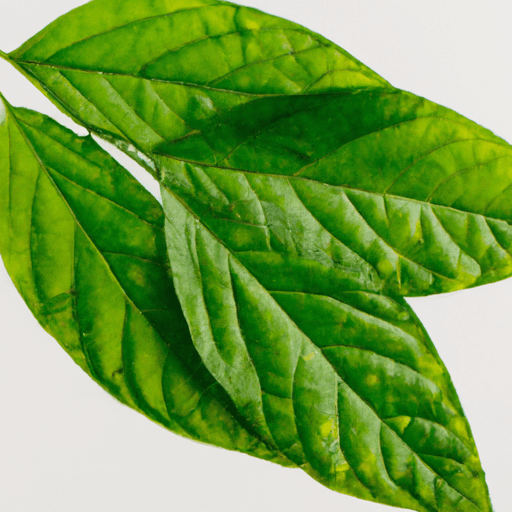All You Need to Know About Avocado Leaves: Taste, Uses, and More!
Avocado leaves may not be as famous as their fruit, but they have a lot to offer in the culinary world. These aromatic leaves are not only packed with flavor but also possess some interesting history and nutrition behind them. In this blog post, we’ll explore everything you need to know about avocado leaves and how they can elevate your cooking to new heights.
Taste and Aroma
Avocado leaves are known for their unique and fragrant flavor profile. They have a subtle anise-like taste with hints of mint and camphor. The aroma of these leaves is reminiscent of licorice and can instantly transport you to tropical regions. The flavor becomes more pronounced when the leaves are used in cooking and infuse their essence into the dish.
Common Uses in Cooking
While avocado leaves are not typically consumed directly, they are highly valued for their ability to impart a delightful aroma and flavor to dishes. These leaves are a staple in Mexican, Central American, and Caribbean cuisines. Here are some popular uses of avocado leaves in cooking:
- Stews and Soups: Avocado leaves are often added to broths, soups, and stews to infuse a distinct earthy flavor.
- Tamales: Avocado leaves are commonly used to wrap tamales. Their fragrance gently wafts through the masa, enhancing the overall taste.
- Grilling and Roasting: These leaves can be used to wrap meats or fish before grilling or roasting, imparting a delightful aroma and an added layer of flavor.
- Beverages and Infusions: Avocado leaves can be steeped in hot water to create herbal teas or infusions with a pleasant, refreshing taste.
Nutritional Value
While avocado leaves are not typically consumed in large quantities, they do offer some nutritional benefits. These leaves contain various essential oils, antioxidants, and phytochemicals, which contribute to their unique flavor and potential health benefits. Avocado leaves are rich in vitamins, minerals, and fiber, offering potential digestive and anti-inflammatory properties.
Interesting History and Facts
Avocado leaves have a rich history in Indigenous cultures, where they were not only used as a culinary ingredient but also for medicinal purposes. The Aztecs and Mayans believed in the healing properties of avocado leaves and used them to treat various ailments.
It’s worth noting that not all avocado varieties produce edible leaves. The most common variety used for culinary purposes is the Mexican avocado (Persea americana var. drymifolia). These leaves have a dark, glossy appearance and are readily available in Mexican markets and some specialty grocers.
Avocado leaves might not be the first thing that comes to mind when you think of cooking with avocados, but they bring a distinctive flavor and aroma to a wide range of dishes. Their subtle anise-mint taste and licorice-like aroma contribute to a truly unique culinary experience. Whether you’re making a hearty soup or grilling some meat, avocado leaves can be your secret ingredient to elevate the flavors.
Next time you come across these incredible leaves, don’t hesitate to experiment and discover the wonders they can bring to your cooking. Happy culinary adventures!
Avocado Leaf
Origin: Avocado leaves come from the Persea americana tree, which is native to south-central Mexico. The avocado tree is a member of the Lauraceae family, which includes other aromatic plants like cinnamon and bay leaves.
Common Uses: Avocado leaves are primarily used as a seasoning or flavoring agent in various culinary applications. They possess a mild anise flavor and are popular in Mexican and Central American cuisines. Avocado leaves are typically used in dried form and can be found in the form of flakes, powder, or whole leaves.
Nutritional Benefits: Avocado leaves are not consumed in large quantities, so their nutritional value is relatively low. However, they contain small amounts of essential nutrients such as dietary fiber, calcium, iron, and vitamins A, C, and E. It’s important to note that avocado leaves are primarily used for their flavor and aroma rather than for their nutritional content.
Unique Properties: Avocado leaves contain a compound called estragole, which contributes to their distinct anise-like flavor. They also contain various essential oils that give them their characteristic aroma. Avocado leaves are typically removed before serving and are not meant to be consumed.
Historical Significance: While avocado leaves have been used for centuries in traditional Mexican and Central American cuisines, their historical significance is not widely documented. Avocado fruits and seeds have a long history of consumption by indigenous peoples in Central and South America, but specific references to avocado leaves in culinary or medicinal practices are scarce. Nonetheless, avocado leaves continue to be an important flavoring element in traditional dishes of the region.
Please note that while avocado leaves are traditionally used in certain cuisines, they should not be consumed in large quantities or used as a substitute for professional medical advice. Always consult a healthcare professional or a culinary expert before using any new ingredient or herb.




Use the share button below if you liked it.
It makes me smile, when I see it.